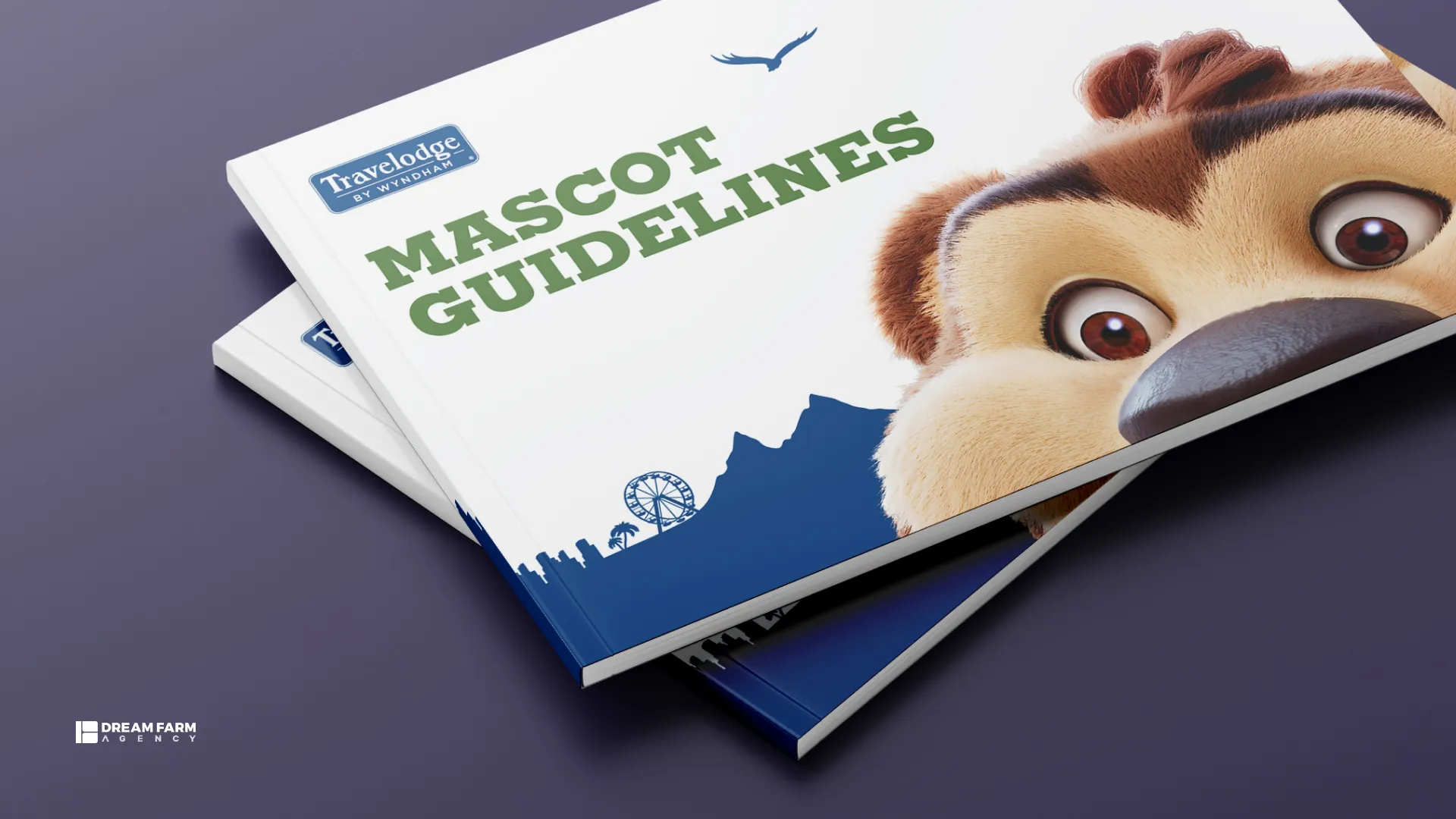
- What is a Brand mascot book?
- What are the benefits of creating a Mascot Book?
- Key Components of a Mascot Book
- Challenges of using incohesive mascots across different channels
- Importance of a Mascot Book for Brand Consistency
- The Role of Brand Identity, Target Audience, and Brand Values in Mascot Development
- Conclusion
A brand mascot can establish a powerful emotional relationship with an audience, but to do so effectively, it needs to be managed with clear guidelines. Before we explore those guidelines (often found in a brand mascot book), it’s essential to first understand what brand mascots are and their strategic role. This article will focus on the mascot book itself and how it helps maximize a mascot’s impact.
What may capture your interest is that mascots are not merely defined as simple characters; rather, they are known as symbolic representations of brand identity and its values. By expressing and articulating engaging narratives, mascots have the potential to connect consumers with brands on a totally different level, leaving a thought-provoking and long-lasting impression.
What is a Brand mascot book?
A brand’s mascot book functions as an extensive guidebook that encapsulates the identity of the mascot. It explores aspects like the mascot’s history, development, look, character attributes, and suggestions for using it on various marketing channels. Consider this a manual that will help you create, specify the function of, and use a mascot for your company. It helps maintain consistency in the identity and message of your brand.
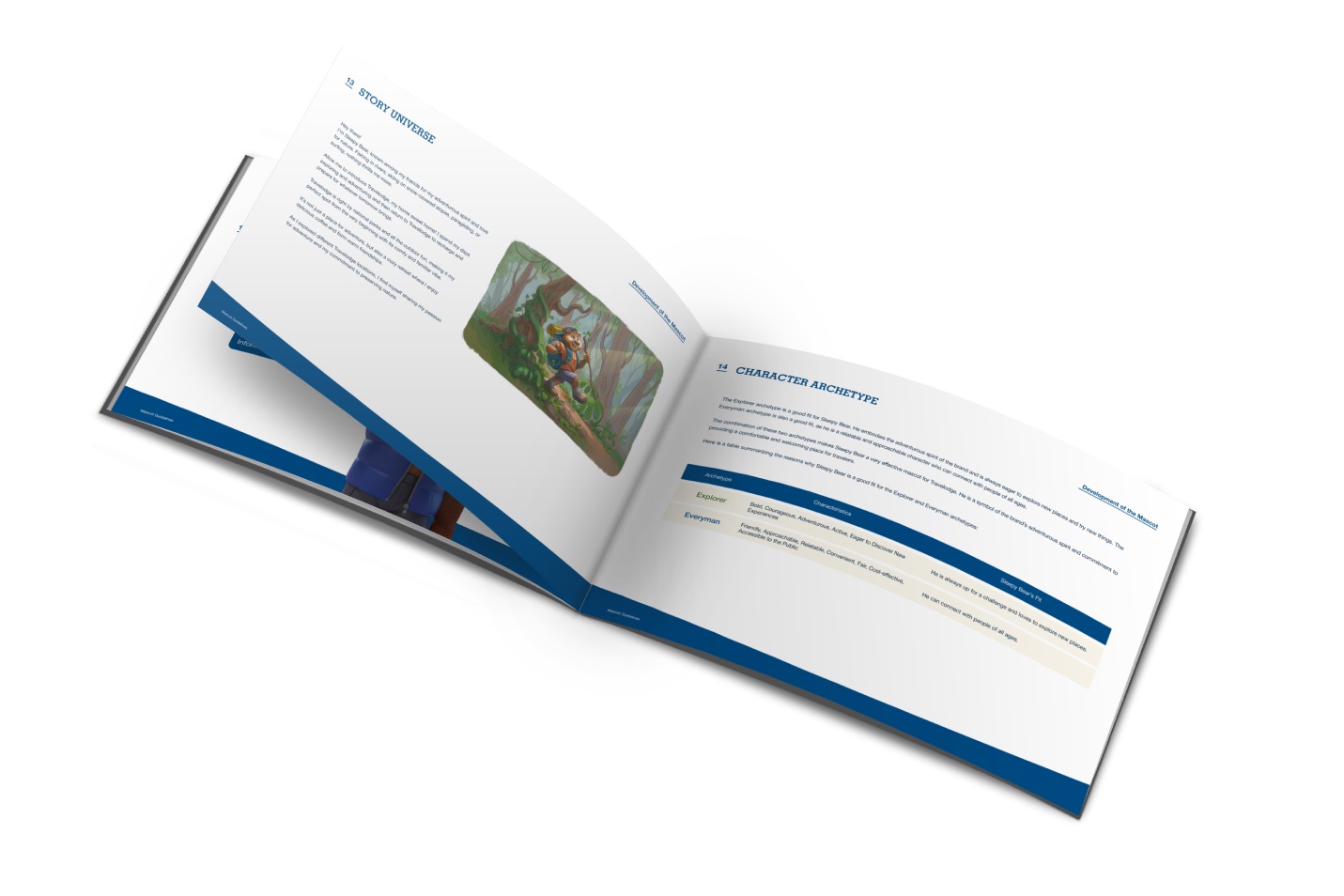
What are the benefits of creating a Mascot Book?
A mascot book has many purposes and may significantly improve a brand’s identification and marketing initiatives. Here are some important points to highlight:
- Consistency: A mascot book guarantees that the brand’s mascot is presented and used consistently across all platforms and marketing materials. This consistency strengthens brand awareness while also building customer loyalty.
- Clarity: A mascot book clarifies how the brand should be portrayed by detailing the mascot’s narrative, personality attributes, and visual depiction, ensuring that all stakeholders grasp the company’s identity.
- Guidance: A mascot book guides marketers, designers, and other stakeholders engaged in brand creation and marketing. It provides vital insights into the strategic use of the mascot, assisting in aligning marketing activities with the brand’s broader aims and values.
- Enhanced Engagement: A well-developed mascot with a compelling backstory and distinct personality traits can create an emotional connection with consumers, leading to increased engagement and brand affinity. A mascot book helps to reinforce this connection by providing context and depth to the mascot’s character.
Overall, developing a mascot book provides various advantages to companies, including enhanced consistency, clarity, guidance, and engagement, all of which contribute to the brand’s overall success and effectiveness in marketing.
Key Components of a Mascot Book
The main components of a mascot book often contain information about the mascot’s identity, origins, personality, and instructions about how to use it effectively. We are going to explore what the mascot’s book components are:
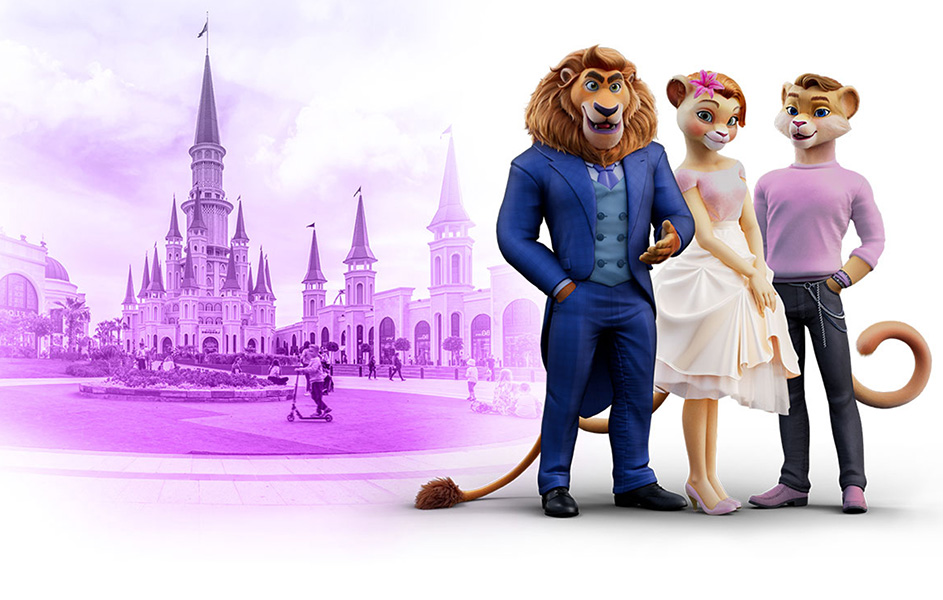
Story Universe
When it comes to mascots and mascot books, the term ‘story universe’ refers to the hypothetical world that is created for the mascot character to inhabit. This includes various elements such as plotlines, themes, and characters, which overall shape the context for the mascot’s stories and engagements with the audience.
Character Profile
Generally speaking, Character Profiles provide a complete overview of what the mascot character is all about, incorporating different elements that define their identity within the story universe. In the following paragraphs, we will delve into these components in detail:
- Backstory: A full account of where the mascot came from and how it became associated with the brand, along with any important historical background. To put it simply, the mascot’s backstory is like its heart and soul; it gives it personality and makes it a beloved brand symbol.
- Name: The identifier by which the character is known, often reflecting their personality or role within the story.
- Existential Philosophy: The underlying beliefs, values, or outlook on life that inform the character’s actions and decisions.
- Archetype: The fundamental character type or stereotype that the mascot embodies, such as hero, sidekick, mentor, or trickster.
- Personality & Characteristics: The traits, quirks, strengths, weaknesses, and mannerisms that make the character unique and relatable.
- Character Role in Story World: The specific function or purpose that the character serves within the narrative, including their relationships with other characters and their impact on the plot.
- Tone and Voice: The overall attitude, demeanor, and style of communication that the character exhibits, which contributes to the tone and mood of the story.
Visual Style Guideline
A description and pictures of how the mascot looks, including its pattern, colors, and any known gestures or versions that are used in marketing materials.
Design Variants
It refers to the different forms and adaptations a mascot character can take across various platforms and media, which can be broken down into several key areas such as 2D Design, 3D Design, printed, digital, and animated formats.
Usage Guidelines across different mediums
- Do’s and Don’ts: It’s important to establish clear guidelines for how mascots are portrayed and utilized across various mediums. This includes specifying acceptable behaviors, expressions, and messaging for the mascot, as well as outlining what should be avoided to maintain brand integrity and alignment.
- Brand alignment: Since mascots are supposed to deliver the core values, messaging, and visual identity of the brand they represent, it is essential to devise specific guidelines that ensure the mascot’s appearance, personality, and actions are completely in line with the brand’s image and could effectively communicate with its target audience.
- Public Appearances Guideline: Whether appearing in-person or digitally, mascots should follow certain guidelines, such as choosing appropriate attire, displaying proper behavior, and engaging with the audience, to ensure consistency and professionalism.
Applications
When we talk about mascots and mascot books, it’s important to know where they’re used. Here are some main places mascots are used:
- Marketing Materials: When it comes to marketing materials, you often encounter things such as brochures, flyers, posters, and online ads. Their presence can make the content more engaging and intriguing, which leads to a better emotional connection with the audience.
- Merchandising: Offering mascot-branded merchandise such as hats, t-shirts, board games, puzzles, mugs, or other products can be considered a direct revenue stream and a brand enhancement, which improves brand exposure in daily life.
- Stickers and Emojis: Digital stickers and emojis of the mascot have the potential to be used on social media platforms, which could elevate the brand to top-of-mind status among consumers, especially those targeted in a younger demographic, and encourage interactive communication where users themselves create brand recognition.
Future Development
It is quite incontrovertible that discussing the mascot’s potential growth is considered indispensable due to the fact that this projection revolves around topics such as design and interaction trends, the assimilation of new technologies, and new strategies for mascot engagement that help brands stay competitive and appealing.
Challenges of using incohesive mascots across different channels
Using incohesive mascots across different channels can present several challenges for a brand, including:
- Brand Confusion
- Loss of Brand Recognition
- Lack of Emotional Connection
- Increased Cost
- Difficulty in Targeting Specific Audiences
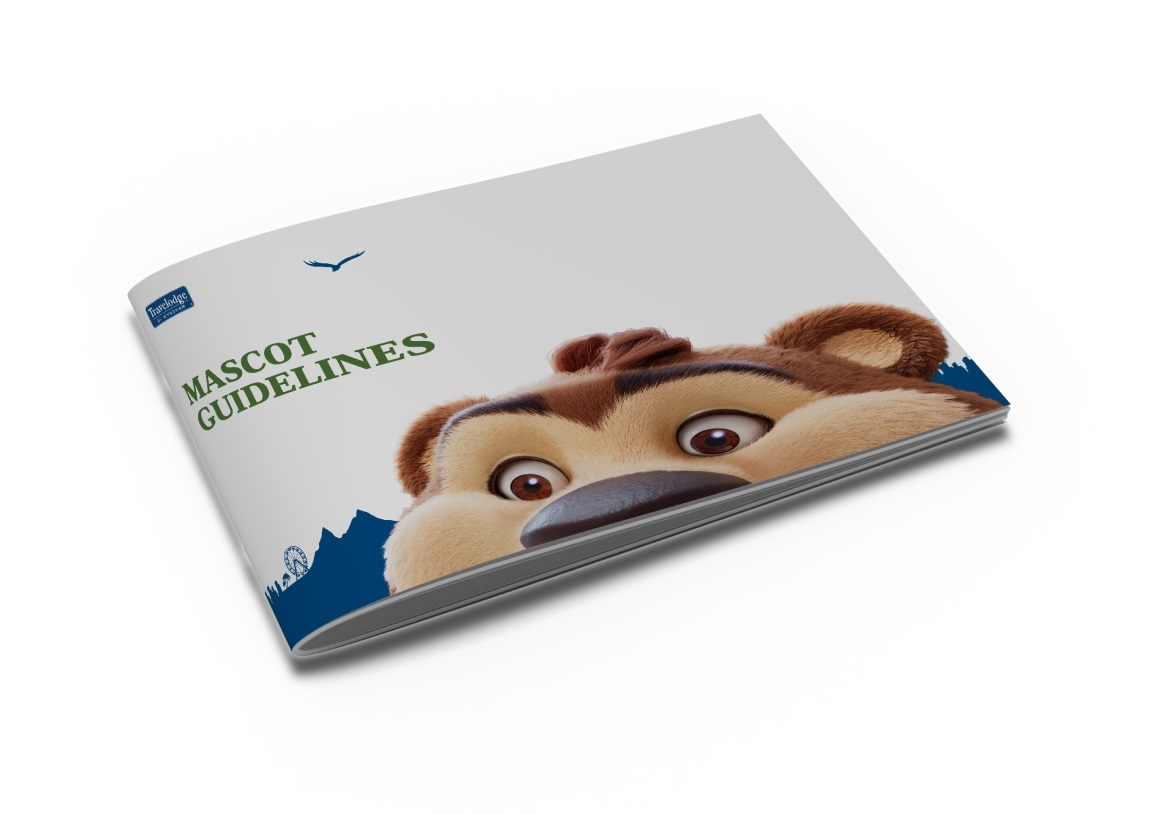
Brand confusion
Using inconsistent mascots across channels and audiences can confuse consumers, leading to brand confusion. This inconsistency may result in difficulty in recognizing the brand and understanding its identity.
Loss of brand recognition
If the mascot keeps changing its appearance or personality, people might not remember it very clearly. This makes it harder for them to recognize or remember the brand when they see it quickly.
Lack of emotional connection
One of the most critical aspects of keeping customers loyal to a brand is to find a way to make them connected with it; therefore, it is safe to say that when the mascot stays the same, it could help people feel certain emotions, which ultimately makes them remember the brand better.
Increased cost
Managing different versions of the mascot across various channels requires extra resources in other areas, including design, marketing, and communication. This complexity will eventually lead to increased costs, resulting in inefficiency for the brand. Additionally, coordinating marketing efforts becomes way more challenging with multiple mascot variants.
Difficulty in Targeting Specific Audiences
There is no doubt that tailoring marketing messages to different demographics is quite important for the sake of higher engagement. The problem that we are facing now is that inconsistent mascots pose challenges for us. The primary reason lies in the fact that audience segments would respond differently to the mascot’s identity. Overall, this inconsistency obfuscates effective targeting and leads to inefficient and unproductive campaigns.
Importance of a Mascot Book for Brand Consistency
One of the main purposes of a Mascot Book is to ensure alignment with the brand’s broader goals, values, and messaging. When the portrayal of the mascot aligns with the brand’s values and messaging, it fosters a cohesive brand experience that engages consumers across various channels.
The mascot book instructs us on how to present it in various places to maintain its look and consistency. As a result, people can easily remember our brand and immediately trust it. The predominant reason why we do this is that when people encounter our brand in various places with the same look, it helps our brand to solidify and reinforce itself in consumers’ minds.
If you’re thinking about adding a mascot to your communication plan, our team is here to help.
With over 10 years of experience and the development of more than 2,500 characters, we’ll guide you through every step to unlock the full potential of your new team member!
Learn more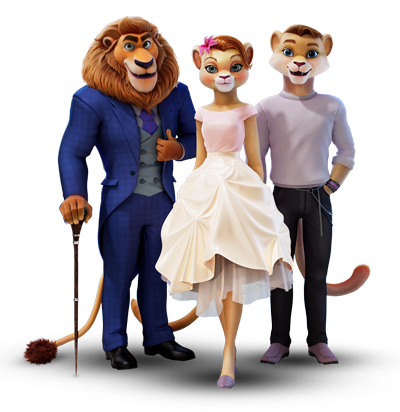
The Role of Brand Identity, Target Audience, and Brand Values in Mascot Development
As we have discussed earlier in this blog, brand mascot development is not entirely linked to creating a fun or engaging character; quite the contrary, it’s a strategic process that is an inseparable part of a brand’s identity, target audience, and brand values. Each individual element plays a vital role in shaping a mascot that effectively represents our brand.
Brand Identity in Mascot Development
Brand identity could play a pivotal role in mascot development by ensuring the incorporation of the brand’s vision, personality, and core values. It can provide consistency across different platforms, which ultimately could lead to engagement with the target audience. Moreover, integrating visual elements such as color schemes and logos into the mascot’s design makes it memorable and symbolic.
Target Audience in Mascot Development
By far, one of the most important parts when it comes to brand mascot development is the target audience. Producing a relatable and charming mascot that people can easily engage with is not an easy task. By knowing what people like and cherish and how they act, brands can create a mascot that is aligned with people’s interests and makes them feel connected.
Brand Values in Mascot Development
Due to the fact that a brand mascot is a square representative of what a brand believes and the values it stands for, one could announce that brand values play a pivotal role in the process of mascot development. Generally speaking, when people see the mascot, what should pop into their mind is nothing but the brand’s personality and values, which gives them a sense of connection and loyalty toward the brand.
Conclusion
After our in-depth look into mascots, it’s clear that creating a mascot book is more than simply a creative exercise; it’s a strategic decision to establish your business’s identity and market presence.
If you’re interested in designing a compelling mascot book that can literally draw your customers’ attention and boost your brand personality, all you need to do is contact us. we at Dream Farm Agency offer a full range of services, such as brand mascot design, creative digital solutions, and interactive media solutions, all of which are executed in a way that allows your brand to resonate with your target audiences. Whether you are trying to launch a new product or rebrand an existing one, our services are meticulously designed to ensure your brand captures attention in the marketplace.

EliCreative Director
PoryaContent Writer


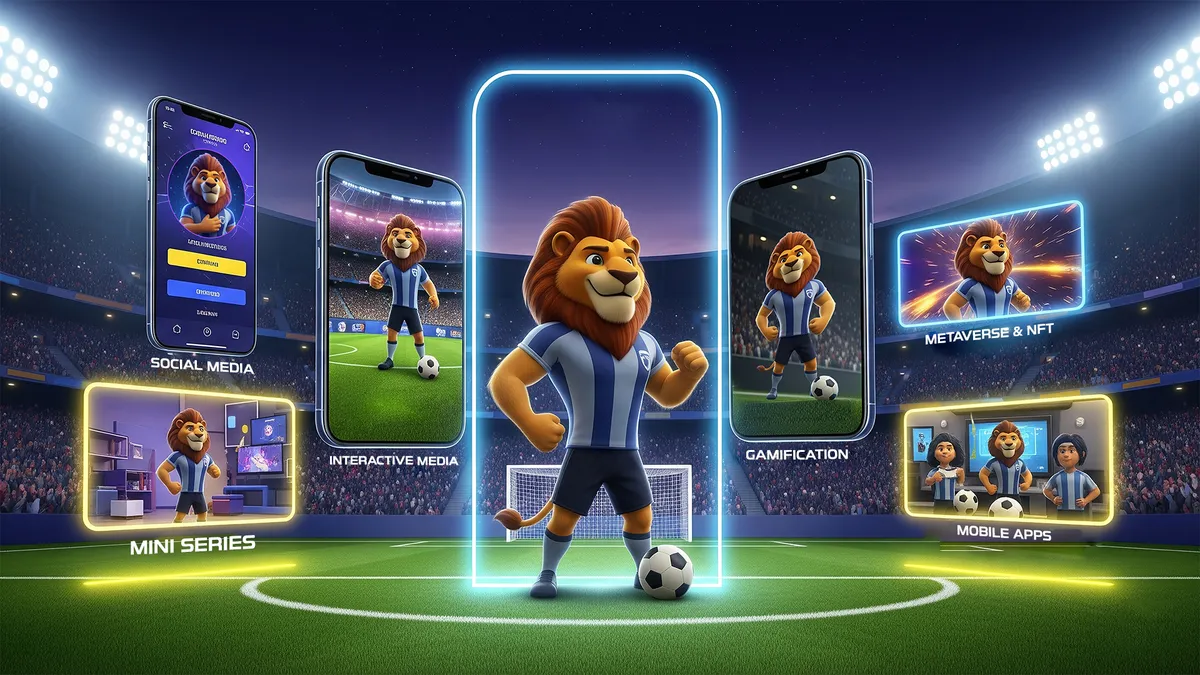

Interesting read! How do brands come up with a good backstory for their mascots?
Brands create a good backstory for their mascots by tying it to their identity and values. They consider the mascot’s origins and personality to make it relatable and engaging for their audience. This connection makes the mascot memorable!